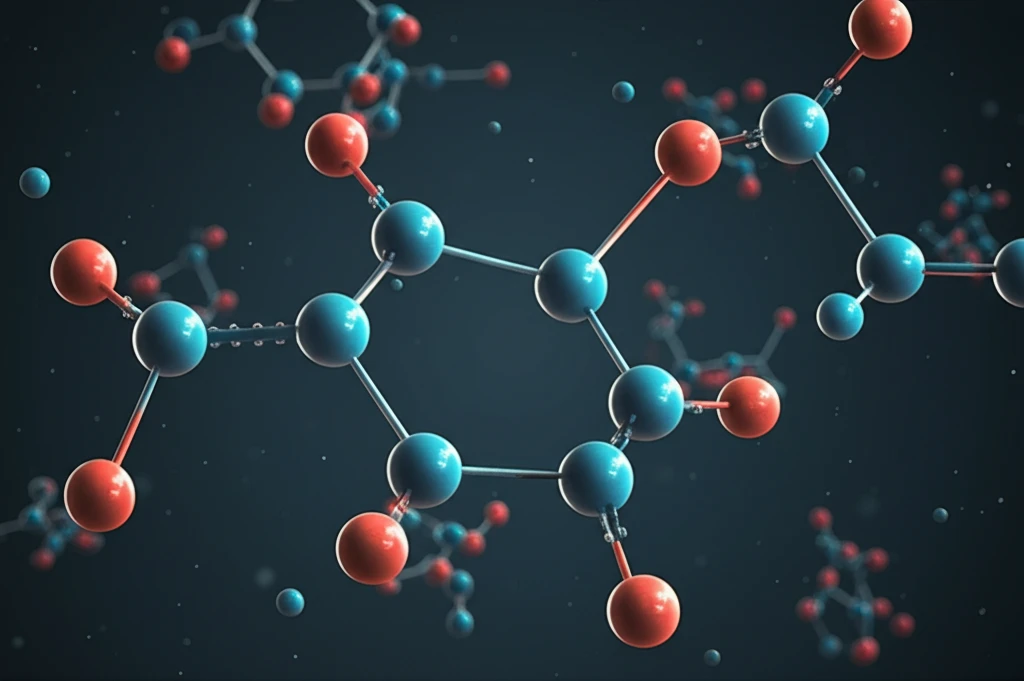
Unlock New Chemistry: How a Cobalt Catalyst Cracks Tough Bonds
"Scientists have discovered a novel cobalt-catalyzed process that efficiently breaks robust carbon-hydrogen and carbon-oxygen bonds, opening doors to advanced material synthesis."
In the realm of chemical synthesis, the activation of carbon-hydrogen (C-H) bonds has emerged as a transformative strategy. Traditionally, building complex molecules requires pre-functionalized starting materials, a process that can be both wasteful and inefficient. C-H functionalization, however, bypasses this need, offering a more direct and atom-economical route to create new compounds. Alkylation, a specific type of C-H functionalization that involves attaching an alkyl group to a molecule, is particularly valuable for constructing carbon-carbon (C-C) bonds, the very backbone of organic molecules.
While conventional alkylation methods often rely on organometallic reagents or alkyl halides, these substances come with their own set of drawbacks, including pre-preparation requirements, environmental concerns, and instability. This has spurred the search for alternative alkylating reagents, with olefins, alcohols, and alkanes stepping into the spotlight. However, each of these reagents presents its own limitations, such as the need for specialized (and often expensive) catalysts or challenges in achieving site-selective reactions.
Enter alkyl ethers. These compounds are abundant, stable, and frequently used as solvents in industrial processes. Harnessing alkyl ethers as alkylating reagents would be a game-changer, but their inherent stability, particularly the robustness of the carbon-oxygen (C-O) bond, has posed a significant hurdle. Now, a groundbreaking study has overcome this challenge, demonstrating a cobalt-catalyzed method for cleaving both C-H and C-O bonds to achieve efficient alkylation of arenes and olefins.
The Cobalt Catalyst Breakthrough

Researchers at Nanjing University and Texas Tech University have pioneered a novel approach using a simple cobalt catalyst to activate alkyl ethers for C-H alkylation. The team focused on using readily available and inexpensive cobalt(II) acetylacetonate [Co(acac)2] along with (pyridin-2-yl)isopropyl amine as a directing group, which helps to guide the catalyst to the desired location on the molecule. This combination, under oxidative conditions, facilitates the cleavage of both C(sp²)-H and C(sp³)-O bonds, effectively using the alkyl ether as a building block to modify arenes (aromatic hydrocarbons) and olefins (unsaturated hydrocarbons).
- Use of inexpensive and readily available cobalt catalyst.
- Versatility in the choice of alkyl ether, expanding the scope of possible products.
- Good site-selectivity, ensuring predictable reaction outcomes.
- Avoidance of pre-functionalized starting materials, making the process more efficient and economical.
Implications and Future Directions
This cobalt-catalyzed alkylation method represents a significant advance in the field of C-H activation, offering a more sustainable and practical approach for synthesizing complex organic molecules. By using readily available alkyl ethers and a relatively inexpensive cobalt catalyst, this method bypasses many of the limitations associated with traditional alkylation techniques. This breakthrough could have a wide-ranging impact on various fields, including pharmaceuticals, materials science, and agrochemicals, enabling the efficient synthesis of novel compounds with tailored properties. Further research will likely focus on expanding the substrate scope, optimizing reaction conditions, and exploring other earth-abundant metal catalysts for similar transformations.
